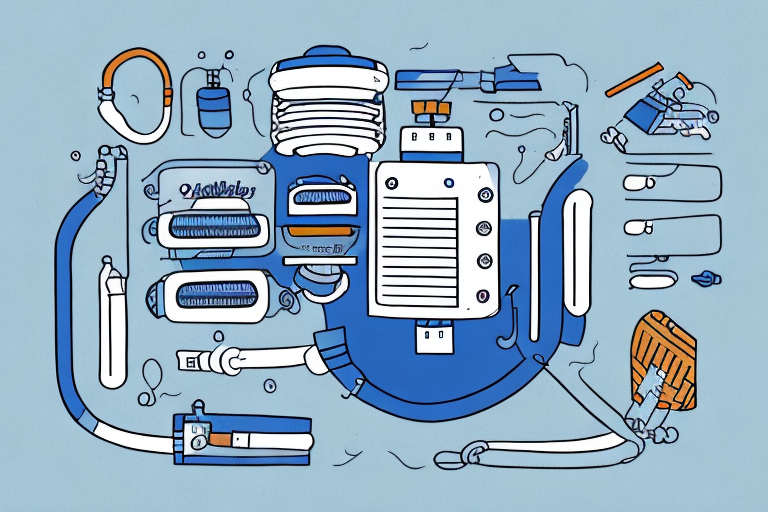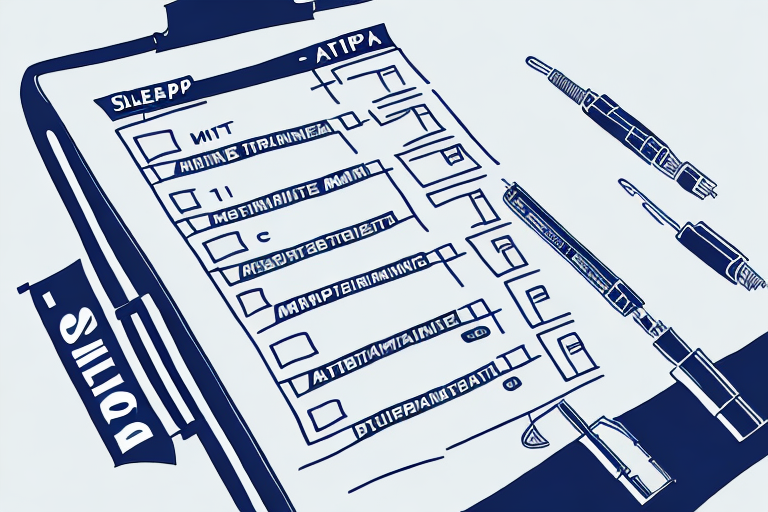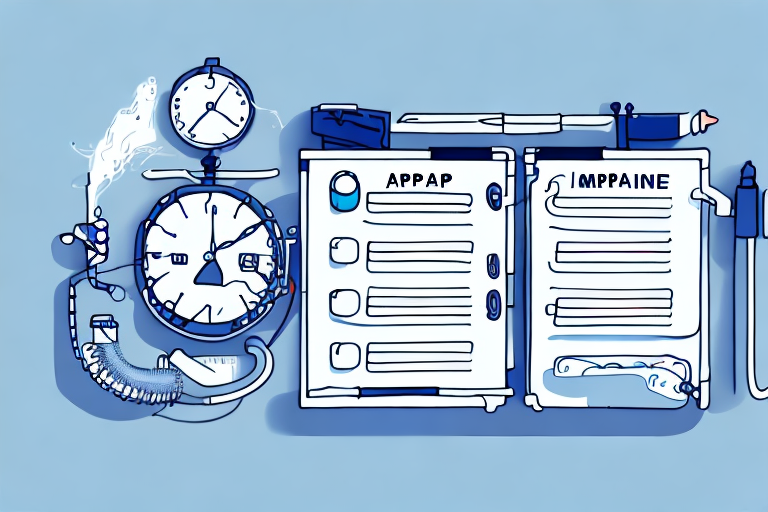Sleep apnea is a sleep disorder that affects millions of people worldwide, and there are various treatment options. One of the most common treatments for sleep apnea is the use of a continuous positive airway pressure (CPAP) machine. However, like any electronic device, CPAP machines require regular maintenance and troubleshooting to ensure optimal performance. In this article, we will provide you with maintenance and troubleshooting tips for your sleep apnea machine, helping you to ensure that your device is performing at its best.
Understanding Your Sleep Apnea Machine
Before we dive into maintenance and troubleshooting, let’s take a look at the different types of sleep apnea machines and how they work. There are two primary types of sleep apnea machines: CPAP and bi-level positive airway pressure (BiPAP) machines. CPAP machines deliver a constant flow of air pressure to keep your airway open, while BiPAP machines provide different airway pressure levels for inhalation and exhalation.
Types of Sleep Apnea Machines
When it comes to choosing a sleep apnea machine, it’s essential to understand the various types available in the market. Some of the most popular manufacturers include resmed airmini, Philips Respironics, and Fisher and Paykel Healthcare, to name a few. Each manufacturer produces various models with different features, making it crucial to choose the one that suits your sleep apnea needs best.
The most common type of sleep apnea machine is the Continuous Positive Airway Pressure (CPAP) machine. These machines deliver a constant flow of air pressure to keep your airway open while you sleep. The Bi-Level Positive Airway Pressure (BiPAP) machine is another popular option that provides two different pressure levels for inhalation and exhalation.

Another type of sleep apnea machine is the Automatic Positive Airway Pressure (APAP) machine. These machines adjust the air pressure automatically based on your breathing patterns and needs throughout the night. Finally, there are also travel-sized sleep apnea machines available for those who need to use their device on the go.
How Sleep Apnea Machines Work
Sleep apnea machines work by delivering a steady flow of air pressure to maintain the airway open. The device has a motor that pulls in air from the surrounding environment, and the air is then pushed through a filter before the pressure is delivered through a tube and mask into the airway.
The mask is an essential component of the sleep apnea machine, as it’s what delivers the air pressure into your airway. There are various types of masks available, including nasal masks, full-face masks, and nasal pillow masks. It’s essential to choose a mask that’s comfortable and fits well to ensure optimal performance and a good night’s sleep.
Key Components of Your Device
CPAP machines have several key components that work together to ensure optimal performance, including the motor, filter, humidifier, tubing, and mask. It’s essential to understand how each component works to maintain and troubleshoot your device effectively.
The motor is responsible for pulling in air from the surrounding environment and delivering it through the tubing and mask into your airway. The filter is what ensures that the air is clean and free of any harmful particles or allergens. The humidifier helps to add moisture to the air, which can be helpful for those who experience dryness or irritation in their airway.
The tubing connects the motor to the mask and delivers the air pressure into your airway. It’s essential to ensure that the tubing is clean and free of any obstructions to ensure optimal performance. Finally, the mask is what delivers the air pressure into your airway and is essential for ensuring a good night’s sleep.
In conclusion, understanding your sleep apnea machine is crucial for maintaining optimal performance and troubleshooting any issues that may arise. By understanding the different types of sleep apnea machines, how they work, and the key components of your device, you’ll be better equipped to manage your sleep apnea and get a good night’s sleep.
Regular Maintenance for Optimal Performance
Using a sleep apnea machine can make a significant difference in your quality of life, but to ensure that your machine is working correctly, you need to perform regular maintenance. Regular maintenance will not only prolong the lifespan of your machine but also ensure that you get the most out of your therapy.

Here are some of the maintenance tips you should follow:
Cleaning and Replacing Filters
CPAP machines have filters that prevent dust, pollen, and other irritants from entering the airway. Over time, these filters can become clogged, making it harder for air to flow through the machine. It’s essential to clean or replace your filters every two weeks to prevent blockages and maintain optimal air quality.
When cleaning your filters, make sure to follow the manufacturer’s instructions carefully. Generally, you can rinse the filter in warm water and mild soap, making sure to remove any debris or dirt. Allow the filter to air dry completely before reinserting it into the machine.
Inspecting and Cleaning the Humidifier
If your sleep apnea machine has a humidifier, it’s crucial to inspect and clean it daily to prevent the growth of bacteria. Bacteria can accumulate in the water chamber, leading to unpleasant odors and even infections.
To clean your humidifier, disassemble it, and wash each part with mild soap and warm water. Make sure to rinse each part thoroughly and allow them to air dry before reassembling the humidifier. If you notice any mold or mildew, use a mixture of white vinegar and water to clean the chamber thoroughly.
Caring for Your Mask and Tubing
Your mask and tubing come into close contact with your skin, making it essential to clean them regularly to avoid the buildup of oils and bacteria. Washing your mask and tubing weekly with mild soap and warm water will help keep them clean and hygienic.
When washing your mask, make sure to disassemble it and clean each part thoroughly. Pay special attention to the cushion, as it can accumulate oils and dirt over time. Rinse each part thoroughly and allow them to air dry before reassembling the mask.
Checking for Leaks and Damage
Regularly check your machine, tubing, and mask for any signs of leaks or damage. Leaks and damage can affect the performance of the machine, leading to inadequate air pressure delivery. If you discover any leaks or defects, replace or repair the affected component immediately.
When checking for leaks, make sure to inspect the tubing and mask for any cracks or tears. You can also use a leak detection device to check for leaks in the machine itself.
By following these maintenance tips, you can ensure that your sleep apnea machine is working correctly and providing you with the therapy you need to get a good night’s sleep.
Troubleshooting Common Issues
Despite regular maintenance, your sleep apnea machine may still develop issues. Here are some of the common problems you may encounter and how to troubleshoot them.
Machine Not Turning On or Power Issues
If your machine isn’t turning on, the first step is to ensure that it’s correctly plugged into a power source and that the power outlet is working. If the power outlet is working, and the machine still isn’t turning on, it may be due to a malfunctioning power cord or a damaged motor. Contact your device manufacturer or a qualified technician to troubleshoot and repair the issue.
In some cases, the issue may be due to a power surge or outage. It’s important to use a surge protector to protect your machine from damage caused by power surges. Additionally, consider investing in a backup power source, such as a battery pack or generator, to ensure that your machine continues to function during power outages.
Unusual Noises or Vibrations
Unusual noises or vibrations may indicate a loose or damaged component. Check your machine, tubing, and mask for any signs of damage or looseness. If you discover any defects, replace or repair the affected component.
In some cases, the issue may be due to the machine being placed on an unstable surface. Ensure that your machine is placed on a stable surface, such as a bedside table, to prevent vibrations and noises caused by an unstable surface.
Inconsistent Air Pressure
Inconsistent air pressure may be due to leaks or blockages in the machine, tubing, or mask. Check for any signs of leaks or defects and replace or repair them as necessary.
Additionally, ensure that your machine’s filters are clean and free of debris. Dirty filters can cause blockages and affect the machine’s performance. It’s recommended to clean or replace your machine’s filters every 1-3 months, depending on usage.
Mask Fit and Discomfort
Mask fit and discomfort may be due to an incorrect mask size or an incorrect initial pressure setting. You can troubleshoot these issues by adjusting the mask size or pressure setting, or consulting with your healthcare provider or a qualified technician.
It’s important to note that mask discomfort can also be caused by skin irritation or pressure points. Consider using a mask liner or cushion to reduce irritation and improve comfort. Additionally, try different mask styles and sizes to find the best fit for your face and sleeping position.
By following these troubleshooting tips, you can ensure that your sleep apnea machine continues to function properly and provide you with the necessary therapy for a restful night’s sleep.

When to Seek Professional Help
If you’ve followed all the above troubleshooting tips and your device still isn’t functioning correctly, it may be time to seek professional help. Here are some of the signs that your machine needs repair or replacement and how to find a qualified technician.
Signs Your Machine Needs Repair or Replacement
Signs that your machine may need repair or replacement include persistent leaks or airflow issues, unusual noises or vibrations, and power issues. If you notice any of these signs, contact your device manufacturer or a qualified technician.
Finding a Qualified Technician
It’s crucial to find a qualified technician to repair or service your sleep apnea machine. You can find qualified technicians through your device manufacturer’s website or by consulting with your healthcare provider. Before choosing a technician, ensure that they have the necessary qualifications, experience, and certification to work on your specific device.
Warranty and Insurance Considerations
Check your device’s warranty and insurance coverage before seeking repair or replacement. Some manufacturers offer limited warranties, and some insurance providers may cover all or part of the cost of replacement or repair. Consult with your device manufacturer and insurance provider to understand your coverage options fully.
Conclusion
In conclusion, regular maintenance and troubleshooting are crucial to ensuring that your sleep apnea machine is performing at its best. Follow the above tips to keep your device functioning optimally and seek professional help when necessary. With proper maintenance and care, your sleep apnea machine can help you to achieve better sleep and improved overall health.

